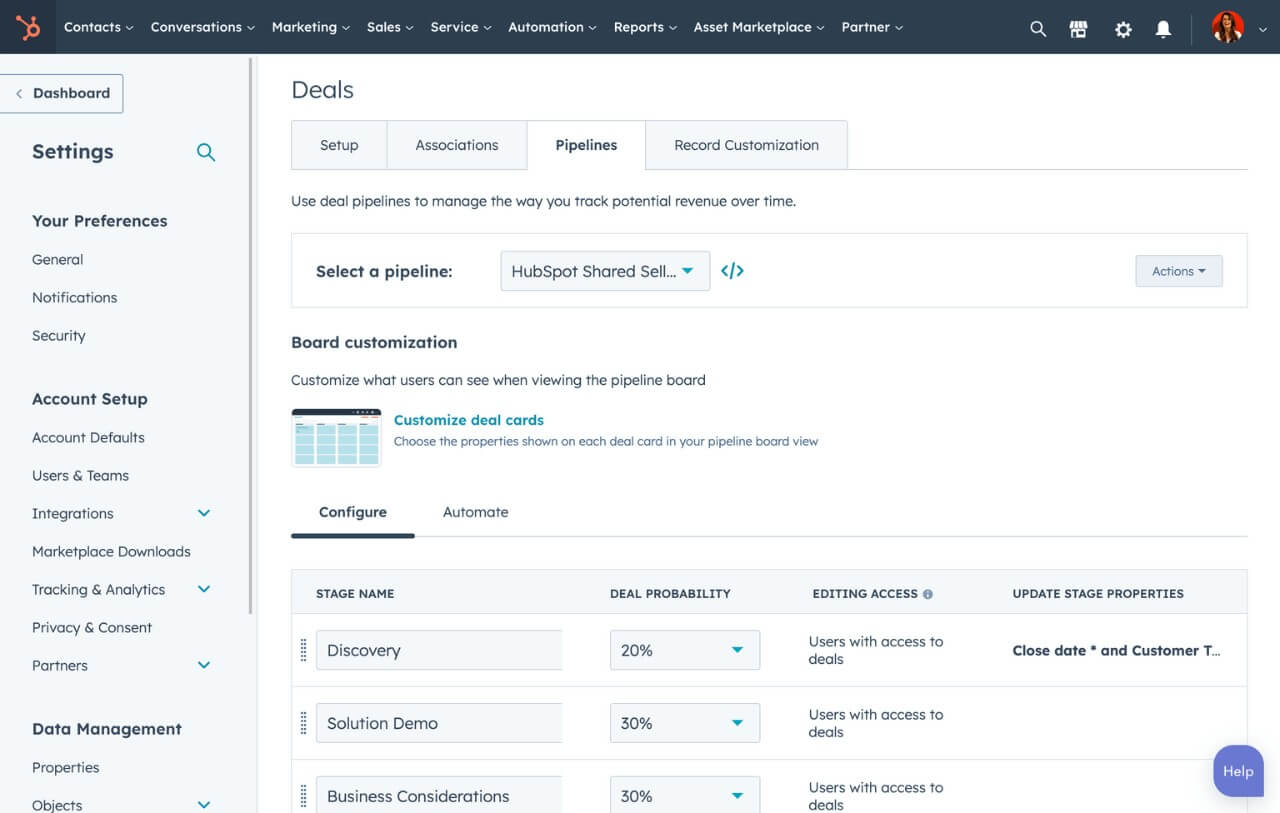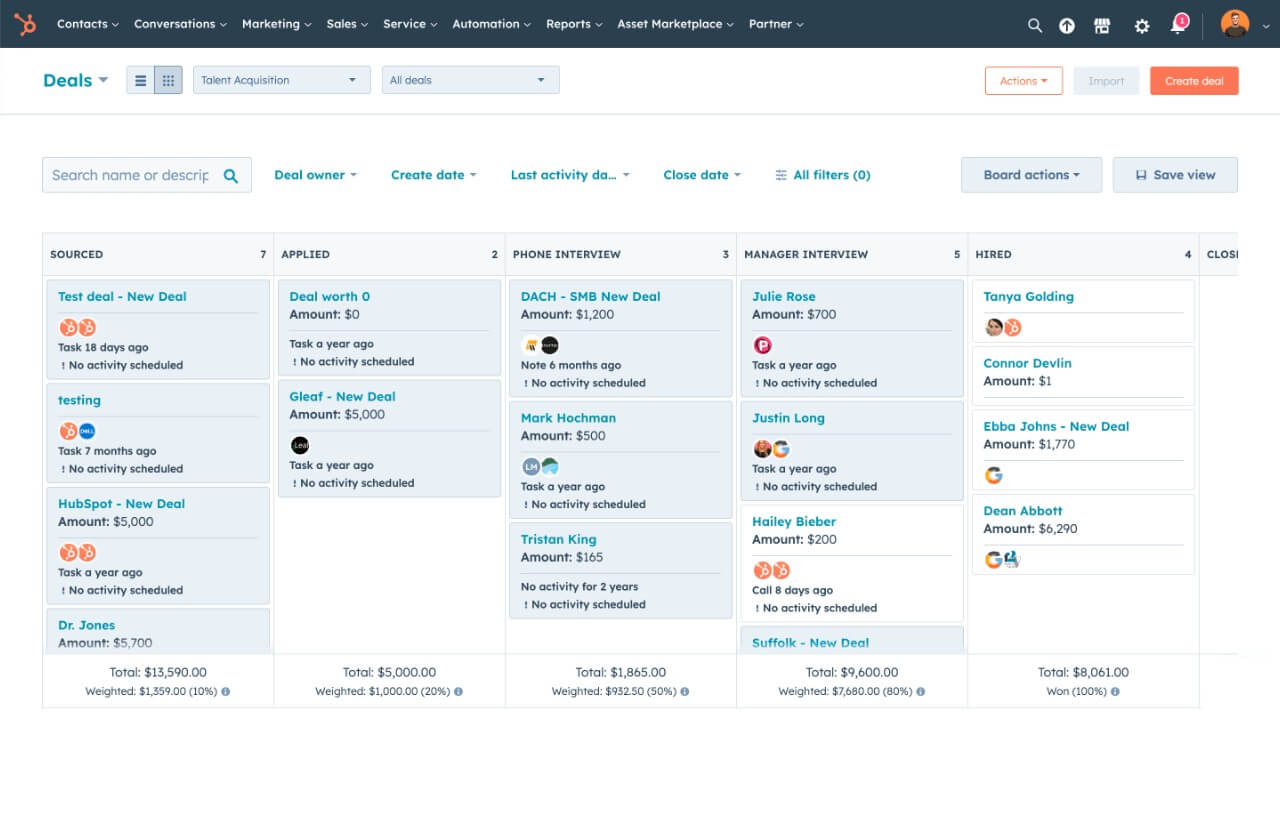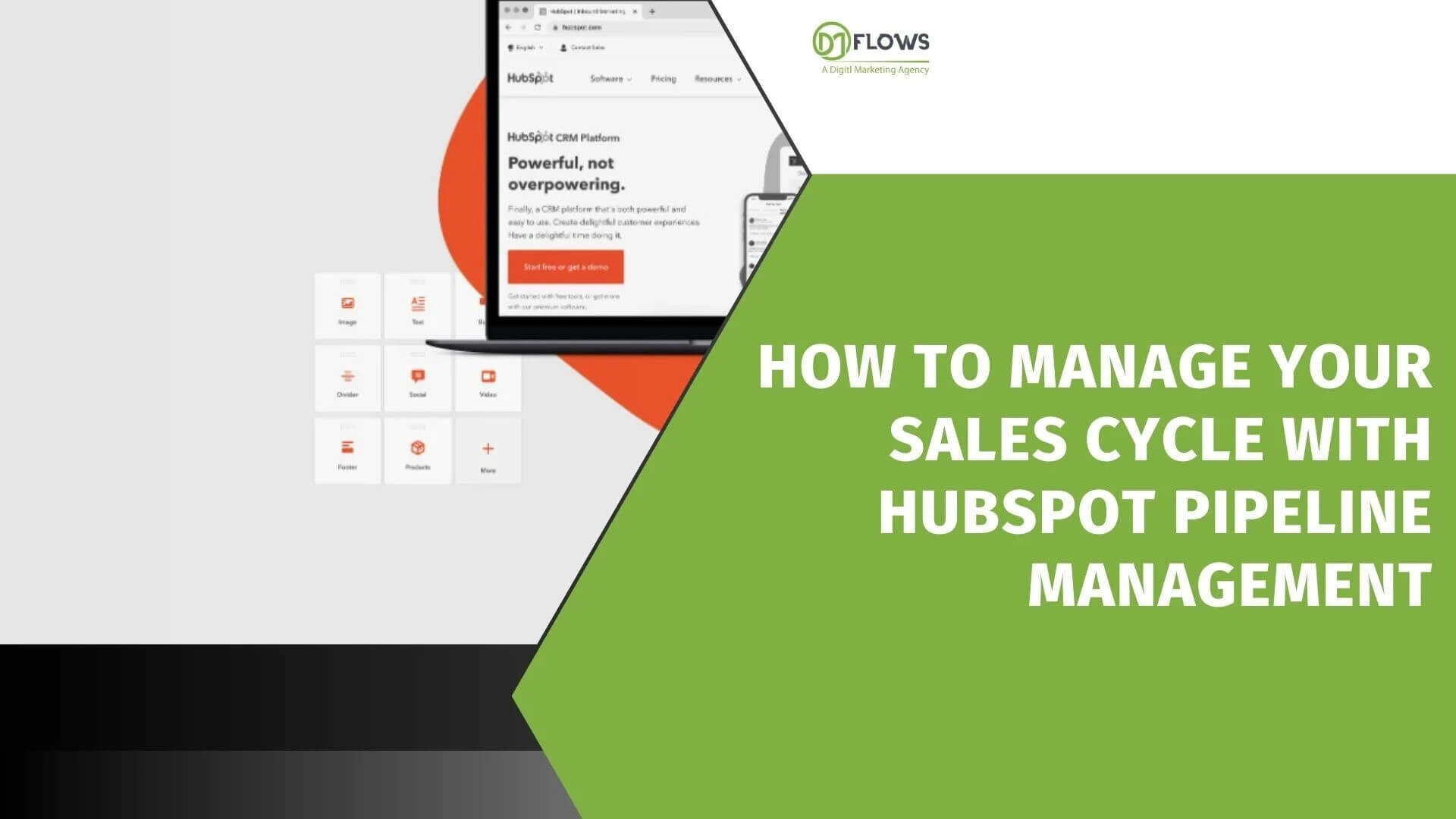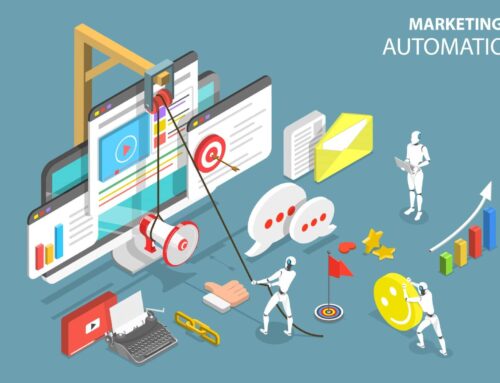Managing Sales Cycle With HubSpot Pipeline Management
Every salesperson dreams of a streamlined sales process, where leads effortlessly convert into loyal customers. But the reality is, the sales cycle can often resemble a maze – full of twists, turns, and dead ends. HubSpot Pipeline Management offers a powerful tool to transform that maze into a clear path to success.
This blog will guide you through utilizing HubSpot’s Pipeline Management system to optimize your sales cycle, boost efficiency, and close more deals.
What is HubSpot Sales Pipeline Management
HubSpot Sales Pipeline Management is a feature within HubSpot’s CRM that helps businesses visualize and manage their sales process. HubSpot Sales Pipeline Management is a useful tool for businesses to streamline their sales process, improve deal visibility, and forecast sales more accurately.
Importance Of a HubSpot Pipeline Management
HubSpot pipeline management is crucial for businesses looking to streamline their sales process and optimize revenue generation. By utilizing HubSpot’s powerful CRM system, companies can effectively track leads, manage contacts, and monitor deals throughout the sales cycle.
This allows for enhanced visibility into the overall sales pipeline, enabling organizations to pinpoint areas of inefficiency and make data-driven decisions to drive growth.
Furthermore, HubSpot’s automation features help teams automate repetitive tasks, prioritize leads based on behavior and engagement, and personalize communication with prospects.
Ultimately, a well-managed HubSpot pipeline not only increases efficiency and productivity within a sales team but also improves customer relationships by delivering a personalized and seamless experience.

Building Your Sales Pipeline
HubSpot Pipeline Management shines with its customizability. The first step is crafting a pipeline that reflects your unique sales process.
Here’s how to get started:
Identify Your Stages
Map out the distinct steps a prospect takes before becoming a customer. Common stages include Lead Generation, Qualification, Demonstration, Negotiation, and Closing.
5 Deal Stages Of HubSpot Sales Pipeline:
1) Qualification, where the sales team gathers basic information about the potential lead such as their needs, budget, and decision-making process.
2) Meeting Scheduled, where a meeting is set up with the lead to further discuss their needs and how the product or service can fulfill them.
3) Presentation Delivered, where the sales team presents a customized solution to the lead based on their specific requirements.
4) Decision Makers Engaged, where discussions are held with key decision-makers in the organization to address any final concerns or objections.
5) Contract Sent, where a formal contract is presented to the lead for review and signature. By moving leads through these distinct stages efficiently and effectively, sales teams can streamline their processes and increase their chances of closing deals successfully.
Tailor Your Pipeline
HubSpot offers default stages, but feel free to add, edit, or delete them to precisely match your process. For instance, you might have a specific stage for proposals or credit approvals.
Assign Probabilities
Assign a probability to each stage, reflecting the likelihood a deal will close at that point. This data will be crucial for forecasting revenue and identifying bottlenecks.
Keeping Your Deals on Track: Powering Your Pipeline
Once your pipeline is built, it’s time to leverage HubSpot’s features to manage your deals effectively,
Drag and Drop Functionality: The intuitive interface allows you to effortlessly move deals between stages as they progress. This visual representation keeps your entire team on the same page.
Deal Cards: Each deal card acts as a central hub for all deal-related information. Access contact details, communication history, tasks, and notes – all within a single, organized view.
Streamlined Data Entry: Stop wasting time with manual data entry. HubSpot auto-fills deal information from existing contact or company records, saving you valuable time.

Supercharge Your Sales with Automation
HubSpot takes pipeline management a step further with automation. Here’s how you can leverage it:
Automated Tasks: Set up automated tasks to trigger based on specific deal stages. For example, an automated email sequence can nurture leads who reach the Qualification stage.
Workflows: Design multi-step workflows to automate complex processes. A workflow might trigger tasks, send internal notifications, or update deal properties as your deals progress.
Webbooks: Connect HubSpot to external applications for even greater automation. For instance, integrate your accounting software to automatically generate invoices upon deal closure.
Maintaining Pipeline Health: Keeping Your Deals Flowing
A healthy pipeline is essential for predictable sales performance. Here are some practices to keep your pipeline in top shape,
Regular Reviews: Schedule regular pipeline reviews to assess deal velocity and identify potential roadblocks. Are deals stalling at a particular stage? This might indicate a need for additional training or resources for your sales team.
Data Hygiene: Accurate data is vital for informed decisions. Regularly clean your pipeline by removing outdated or irrelevant deals. This ensures your pipeline reflects reality and helps you forecast with confidence.
Sales Coaching: Use pipeline data to identify areas where reps need improvement. Focus coaching efforts on those specific stages, helping reps overcome hurdles and close more deals.
Best Practices to Implement For Creating and Managing HubSpot Pipeline Management
To effectively create and manage your HubSpot sales pipeline in 2024, it is essential to adhere to best practices that align with current trends and technologies.
>> One key practice is to segment leads based on their behavior and engagement with your brand, allowing for personalized interactions and targeted messaging.
>> Additionally, incorporating automation tools such as chatbots and email sequences can streamline the nurturing process and move leads through the pipeline quicker.
>> Utilizing data analytics to track performance metrics and adjust strategies accordingly will also play a crucial role in optimizing the pipeline for maximum efficiency.
For example, if a particular email sequence is yielding high conversion rates, you can replicate its success in other areas of the sales process.
Additional Tips
Standardize Your Sales Process: Ensure all reps follow the same process to maintain consistency and improve sales forecasting.
Keep Your Pipeline Clean: Regularly remove stalled deals to avoid clutter and improve the accuracy of your pipeline.
Train Your Team: Provide comprehensive training on using HubSpot and your sales pipeline to ensure everyone is on the same page.
Conclusion: Transforming Your Sales with HubSpot Pipeline Management
By leveraging HubSpot Pipeline Management, you can transform your sales cycle from a maze into a clear path to success. Through customizable pipelines, powerful automation features, and data-driven insights, you can streamline your sales process, boost efficiency, and empower your team to close more deals. So, take control of your sales funnel and watch your business thrive with the power of HubSpot Pipeline Management.






